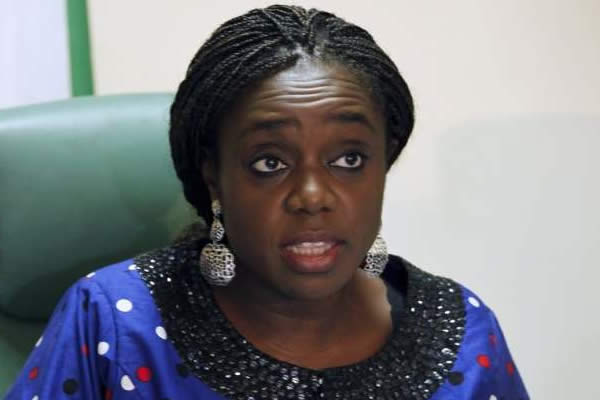Cover Story
Economy searches for growth…as recovery remains fragile

FELIX OLOYEDE
Edging out of recession in the second quarter of 2017 has left economic analysts deeply divided over the significance of the 0.55 per cent rise in the country’s gross domestic product (GDP), which had remained negative over the previous five straight quarters. The GDP figure flipped up from -0.9 per cent in the first quarter of the year to slightly over half a percentage point as increased output rode on the shoulders of international oil price averaging slightly under $50 per barrel between the months of April and June.
Figures released by the National Bureau of Statistics (NBS) last week saw the country shifting into a higher growth gear as agriculture and industrial sector activities started to pick up marginally. The agency explained that the economic recovery was underpinned largely by a 1.64 per cent growth in the oil sector, the agricultural sector, which grew 3.01 per cent in Q2 2017 and the electricity and gas and financial services sectors which witnessed a significant 35.5 per cent growth over the period.
Local analysts have noted that the government may need to take more sever action to combat inflation worries as average consumer price index (CPI) remains menacing at a growth rate of 16.05 per cent per annum.
“It is good news that we are out of recession. It shows that confidence is beginning to return to the economy”, says Dr Vincent Nwani, Director, Research and Advocacy, Lagos Chamber of Commerce and Industry (LCCI) in a telephone conversion in Lagos. “But the country’s economy is still very fragile. There is still divergence between monetary and fiscal policies.”
He explained that the high cost of funds still poses a challenge to economic growth, despite a policy of relatively low interest rates being a critical component of the government’s Economic Recovery and Growth Plan (ERGP), launched earlier in the year by President Mohammedu Buhari. Nwani noted that the government was even finding it difficult to raise money to implement the economic blueprint, adding that it has been busy borrowing both internationally and domestically, which has made the Debt Management Office (DMO) place a $22 billion borrowing peg on government. Nwani stated that the Buhari-led administration’s penchant for issuing Treasury Bills and Bonds has crowded out the private sector, worsening its chances of raising fresh capital. He maintained the Central Bank of Nigeria’s stance on pursuing tightening monetary policy was stifling the private sector.
“If anything should happen to oil prices or output, Nigeria may slip back into recession,” he cautioned, “The government needs to put in place structures that would make growth sustainable, because it is not organic presently.”
“Although the economy is out of recession, we have not recovered,” Mr Ambrose Oruche, Director, Corporate Affairs, manufacturers Association of Nigeria (MAN), who is an economist, has argued. “The government needs to build on the gains recorded, especially on foreign exchange and implement policies that would reflate the economy. Forex was a major issue that led to recession in the first place.”
He stressed the need for the CBN to put in place more appropriate forex management policies, which would continually make forex available to the industrial sector.
The country suffered acute forex shortage due to the slump in crude oil price, falling as low as $27 per barrel in February 2016. As part of efforts to address this challenge, the apex bank came up with different policies including banning allocating to forex to importers of 41 items, closing of the Retail Dutch Auction System (rDAS) and Wholesale Dutch Auction System (wDAS), stopping of weekly forex allocation to bureau de change operators etc. During this period, the naira stumbled to N525 to a dollar However, the currency has achieved some stability since the apex bank commenced aggressive intervention in the forex market and introduced the Nigerian Autonomous Foreign Exchange market (NAFEX) also known as the Investors’ and Exporters’ FX Window in April 2017. The CBN has so far injected close to $10 billion into the country’s forex market since the first quarter of 2017.
The naira exchanged $/N365 at the parallel market on Friday, losing 0.10 per cent of its value when compared to $/N358.97 it traded on Thursday. But dollar was sold for N359.70 and N305.95 on the NAFEX and CBN window respectively.
Meanwhile, the presidency has stated the country’s exit from recession would only be meaningful when it reflects positively in the lives of ordinary Nigerians. “I am looking forward to ensuring that ordinary Nigerians feel the impact.
“Until coming out of recession translates into meaningful improvement in peoples’ lives. Our work cannot be said to be done,” President Buhari stated in a release signed by his Special Assistant on Media and publicity. Garba Shehu.
The International Monetary Fund (IMF) recently noted that Nigeria’s economy was still prone to shocks despite showing signs of recovery. It urged the government to strive for stronger fiscal consolidation through sustainable expansion of the country’s non-oil revenue base. It also challenged the central bank to avoid direct financing of government and maintain a unified and market-based exchange rate.
Crude oil contributes less than 10 per cent to Nigeria’s GDP, but provides over 90 per cent of the country’s foreign exchange earnings, making its economy to suffer severely when oil prices fall in the international market. Brent Crude was sold for $54.51 per barrel, while Light Crude went for $49.09 on Friday. $42.50 benchmark was used for the 2017 budget.
The Nigerian GDP reports shows that the Q2 2017 growth rate of 0.55 per cent (year-on-year) was 2.04 per cent higher than the rate recorded in the corresponding quarter of 2016 (-1.49%) and higher by 1.46 per cent points from rate recorded in the preceding quarter, which was revised to –0.91% from –0.52% due to revisions to crude output for March 2017.
About 15 economists surveyed by Bloomberg had predicted that the Nigerian economy extended 0.7 per cent in Q2 2017; the IMF projected a 0.8 per cent GDP growth rate for the country at the end of 2017, which would be aided by increase in crude oil price and output.
The preliminary results for the second quarter of the year released by the statistics agency showed the economic recovery was on the back of significant growth recorded in oil, agriculture, manufacturing and trade activities during the period under review.
The results revealed that Oil GDP recovered significantly from -11.63 per cent in Q2 2016 and -15.40 per cent in Q1 2017 to 1.64 per cent in Q2 2017.
But while Oil GDP expanded considerably in the second quarter of 2017, Non-oil GDP only grew at 0.45 per cent, down from 0.72 per cent in the preceding quarter and -0.38 in the corresponding period in 2016.
It also showed that agriculture continued its strong and positive growth, which it had maintained throughout the recession, growing by 3.01 per cent in Q2 2017, from 3.39 per cent in Q1 2017 and 4.53 per cent in Q2 2016.
Manufacturing retained its positive growth for the second consecutive quarter in Q2 2017, growing at 0.64 per cent compared to 1.36 per cent in Q1 2017 and -3.36 per cent in Q2 2016, while trade which has a dominant share of GDP remained negative at -1.62 per cent, but the contraction in the sector decelerated from the -3.08 per cent recorded in Q1 2017.
Also, electricity and gas and financial institutions sectors also recorded strong growths, with electricity and gas growing by 35.5 per cent, compared to -5.04 per cent in Q1 2017 and -10.46 per cent in Q2 2016 and financial institutions growing by 11.78 per cent in Q2 2017, compared to 0.60 per cent in Q1 2017 and -13.24 per cent in Q2 2016.
The results also showed that the industry sector grew positively by 1.45 per cent in Q2 2017, after nine consecutive quarters of negative growth since Q4 2014.
As a percentage of GDP, services retained the giant share of GDP at 53.73 per cent in Q2 2017, down by 1.94 per cent points (55.67 per cent) from the first quarter of 2017 and 54.80 per cent in Q2 2016; industries accounted for 23.31 per cent of GDP, compared to 22.90 recorded in Q1 2017 and 22.65 per cent in Q1 2016; while agriculture accounted for 22.97 per cent of GDP in the quarter under review, compared to 21.43 per cent in Q1 2017 and 22.55 per cent in Q2 2016.


